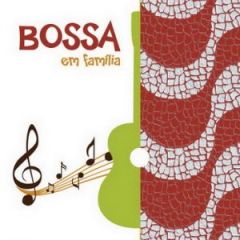Bossa Em Familia (2014)
Bossa Em Familia (2014)

01. Jair Rodrigues - Eu Sei Que Vou Te Amar (02:20) 02. Paulinho Nogueira - Luiza (02:08) 03. Johnny Alf - Eu e a Brisa (02:08) 04. Zimbo Trio - Chega de Saudade (04:28) 05. Jane Duboc - Estrada do Sol (02:45) 06. Pery Ribeiro - O Barquinho (02:39) 07. Toquinho - Aquarela do Brasil (04:02) 08. Nova Banda - Borzeguim (02:20) 09. Virginia Rosa - A Ponte (03:43) 10. Taiguara - Samba do Amor (02:57) 11. Claudete Soares - Garota de Ipanema (03:02) 12. Wilson Simonal - Pais Tropical (02:49) 13. Zimbo Trio & Claudya - Beatriz (04:49) 14. Zeze Mota - Tema de Amor de Gabriela (03:57) 15. Belchior - Aguas de Marco (03:30)
Bossa nova means “new trend” in Portugese, and refers to a style of music popularized in Brazil in the late 1950s. Using elements of samba and jazz, bossa nova has had an indelible influence on jazz since the 1960s.
A key feature of bossa nova is its cool, relaxed style, perhaps owing to the fact that it was developed in the beachside areas of Rio de Janeiro. Although its rhythmic base is taken from the intense and highly percussive samba, bossa nova tends to be light and frothy, often featuring guitar and vocals, and brushes instead of sticks on the drum set.
João Gilberto, a singer and guitarist, is considered the creator of bossa nova. He developed the style by playing variants of samba rhythms on the guitar, and by playing more complex harmonies than were normally heard in Brazilian popular music. His frequent collaborator, Antonio Carlos Jobim, wrote the music to many of the most popular bossas ever written.
Jobim’s “Chega de Saudade” (“No More Blues”) was the first bossa nova recording, made in 1958. It was an instant hit, and kicked off the careers of both Gilberto and Jobim, as well as the popularity of bossa nova.
Bossa nova came to the United States in 1962, when American tenor saxophonist Stan Getz worked with Gilberto and Jobim on the album Getz/Gilberto. The “Gilberto” in the album’s title refers to singer Astrud Gilberto, João’s wife at the time. Astrud was not a professional singer before she recorded with Getz, but her clear and tranquil voice became an immediate sensation upon the album’s release.
Many bossa nova songs have worked their way into the jazz repertoire, especially Jobim’s “The Girl From Ipanema,” “Corcovado (Quiet Nights of Quiet Stars),” and “How Insensitive.” Often, musicians will apply the bossa style to songs that were not originally bossa nova. Singer/pianists Eliane Elias and Diana Krall have rekindled the spark of bossa nova on their respective 2009 albums “Bossa Nova Stories” and “Quiet Nights.” --- jazz.about.com
download (mp3 @320 kbs):
uploaded yandex 4shared mega solidfiles zalivalka cloudmailru filecloudio oboom








